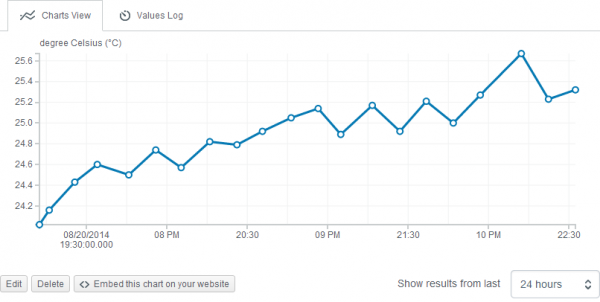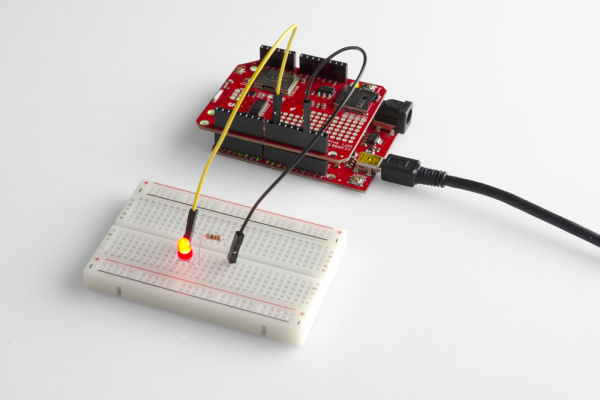Using AT&T's M2X With the CC3000
This Tutorial is Retired!
This tutorial covers concepts or technologies that are no longer current. It's still here for you to read and enjoy, but may not be as useful as our newest tutorials.
Introduction
M2X is AT&T's Machine-to-Machine (M2M) cloud solution. You can set up any number of "streams" on https://m2x.att.com/ and post, fetch, delete data from any number of Internet-connected devices.
Great, but what does all that mean? Well, let's say you have a sensor (temperature, pressure, carbon monoxide, wind speed, etc.), and you want to log all that data to somewhere on the Internet. M2X allows you to post that sensor data and view that data from any computer or smart phone connected to the Internet.
Conversely, we can control a device connected to M2X from anywhere (as long as we have Internet access). While M2X is not explicitly set up to push data to connected devices, we can write a program for the device that polls an M2X stream for data and performs some action based on that data.
All of this falls under the umbrella of Internet of Things (IOT), in which Internet-connected embedded systems can communicate with Internet services, such as web sites or other connected devices.
In this tutorial, we use a SparkFun RedBoard (an Arduino Uno R3 will work, as well) and a CC3000 Shield to connect to M2X via WiFi. A temperature sensor, level shifter, LED, and resistor will also be needed for the tutorials. The specific components will be covered in each section.
We show how to set up an M2X account, create a stream, post sensor data to that stream, and control an LED from a stream. Keep in mind that these are just starting points for projects; if you want to monitor your oven or control your refrigerator, go for it!
Note: At the time of this tutorial's publication, M2X is still in beta form. You may find some bugs along the way. Feel free to ask questions or post bugs on the M2X Forums. Also, expect things to change as AT&T improves the M2X service.
Suggested Reading
- What is an Arduino?
- How to Solder
- I2C
- Logic Level Converter Hookup Guide
- HTU21D Temperature and Humidity Sensor Hookup Guide
- CC3000 Hookup Guide
- M2X RedBoard Tutorial

